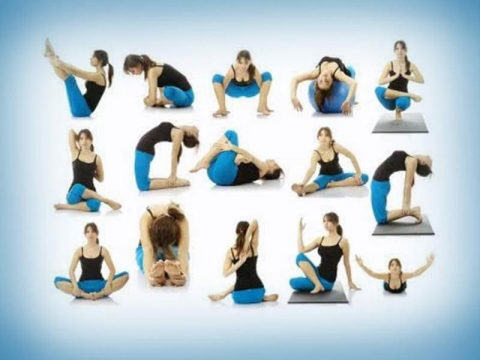
Types of Yoga
- Ashtanga Yoga-
Ashtanga signifies “eight limbs” and incorporates a yogic way of life. A great many people recognize Ashtanga as regular Indian yoga. Like Vinyasa yoga, the Ashtanga yoga asanas synchronize breath with development as you travel through a variety of stances. It was brought to the U.S by Sri K. PattabhiJois in the mid-twentieth century. The arrangement of stances are practiced similarly every time and comprise of Sun Salutation A, Sun Salutation B, a standing grouping, and an end succession. The training is typically performed without music, and now and again without verbal instruction.

- Power Yoga –
Power yoga is an increasingly dynamic way to deal with conventional Hatha yoga presents. The Ashtanga yoga presents are performed all the more rapidly and with included center activities and abdominal area work. The successions are not the equivalent every time, and there is frequently peppy music. Vinyasa yoga can be Power yoga, contingent upon the gym or studio that is facilitating the class.
- Iyengar Yoga-
Additionally dependent on the Eight Limbs of Yoga, Iyengar yoga is named after B.K.S. Iyengar, a well-known yogi from India. It was advanced in the West about the same time from Ashtanga yoga. The emphasis on this training is alignment in the asanas utilizing breath control through pranayama and the utilization of props (reinforces, covers, squares, and lashes.) This style of yoga is generally instructed without music and at a slower pace intended to help students to get further into the stances.
- Vinyasa Yoga-
Vinyasa yoga is prevalent and is instructed at most studios and exercise centers. “Vinyasa” signifies connecting breath with development. The stances are typically done in a flowing sequence, or “vinyasa stream.” The smooth movements can be retained and done as a moving contemplation, practically like a move. The popularity of this style of yoga originates from the arousing developments, lovely music, typically rehearsed in a dark room, or now and again by candlelight and with the eyes shut.

- Bikram Yoga –
Bikram Choudhury planned Bikram yoga during the 1970s, who conveyed the training to California from India. The class comprises of a similar twenty-six yoga stances and two breathing activities. It is an hour and a half long and done in a room that is 105 degrees Fahrenheit with 40% dampness. The room is brilliant, and the student confronts mirrors to check the proper step and arrangement. There should not be music during class.
- Jivamukti Yoga-
https://www.youtube.com/watch?v=fB6B9rQjEeU
Jivamukti was made in the year 1984 by Sharon Gannon and David Life in New York City. ivamukti meaning “freed being.” Class joins Sanskrit reciting, Pranayama, and development (Asanas), with a subject or exercise for each class. This is a mix of profound and physical exercise.
